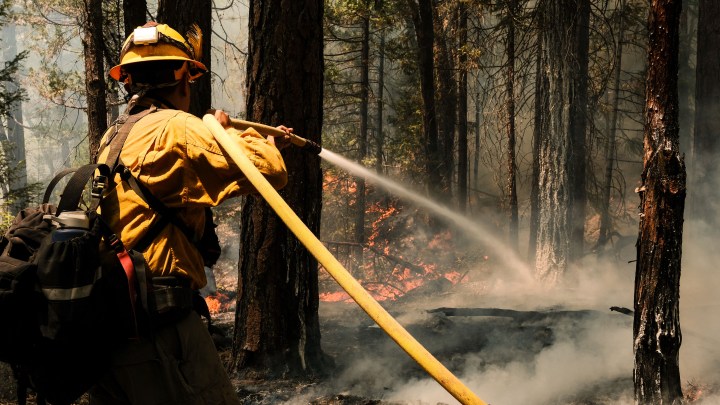
As wildfires rage, infrastructure bill aims to mitigate their impact
As wildfires rage, infrastructure bill aims to mitigate their impact

The Senate passed the $1 trillion infrastructure package Tuesday with bipartisan support. It now goes to the House of Representatives. As it stands, the bill directs billions of dollars to address climate change, including wildfire prevention and resilience.
That’s not surprising, perhaps, given that last year was a record-setting year for fires in the United States. And as the Intergovernmental Panel on Climate Change report confirmed Monday, we are headed toward an even hotter future.
Almost every year, it seems, wildfires are setting records; on Sunday, the Dixie fire became the second-largest in California history.
“And the cost of it’s going to just go up over time. We’re talking about billions of dollars of lost property and economic activity,” said Amy Myers Jaffe with the Climate Policy Lab at Tufts University.
The actual dollar amounts in the infrastructure bill — specifically for wildfire mitigation — are relatively small, she said.
But still, “it’s an important acknowledgement that this is a major challenge for the United States. And we need to address it in a multifaceted way,” she said.
If the bill passes the House as is, the National Oceanic and Atmospheric Administration would get millions of dollars to put toward better fire forecasting.
“The bill would significantly increase funding for the Department of the Interior and forest service for a range of activities that can decrease communities’ risks to wildfires,” said Laura Brush at the nonprofit Center for Climate and Energy Solutions.
That includes things like forest restoration, prescribed burns and better planning, Brush said.
All that will help to some degree, according to Michael Mann, an atmospheric scientist at Pennsylvania State University. But ultimately, preventing more extreme wildfires means moving away from fossil fuels.
“In the absence of that large-scale shift away from fossil fuel burning, there are no resiliency measures that are going to insulate us,” Mann said.
And he said only clean and renewable energy can do that.
There’s a lot happening in the world. Through it all, Marketplace is here for you.
You rely on Marketplace to break down the world’s events and tell you how it affects you in a fact-based, approachable way. We rely on your financial support to keep making that possible.
Your donation today powers the independent journalism that you rely on. For just $5/month, you can help sustain Marketplace so we can keep reporting on the things that matter to you.












